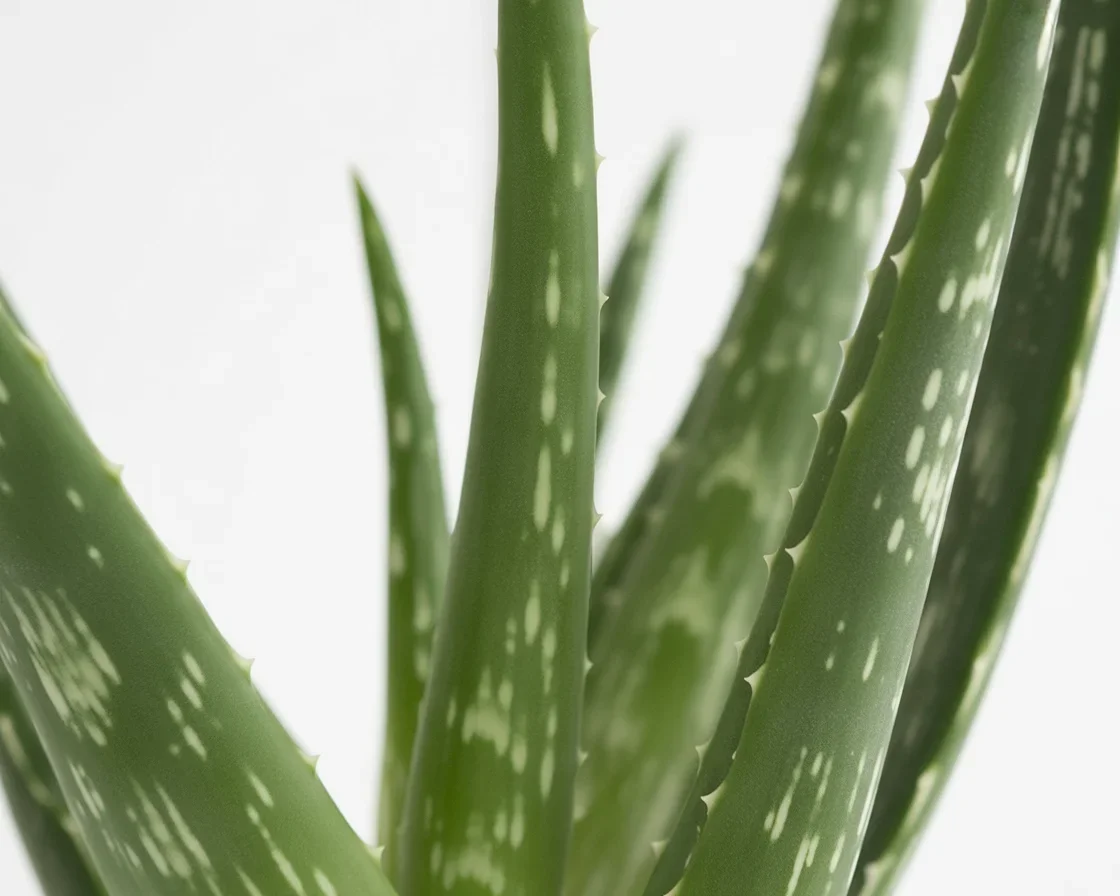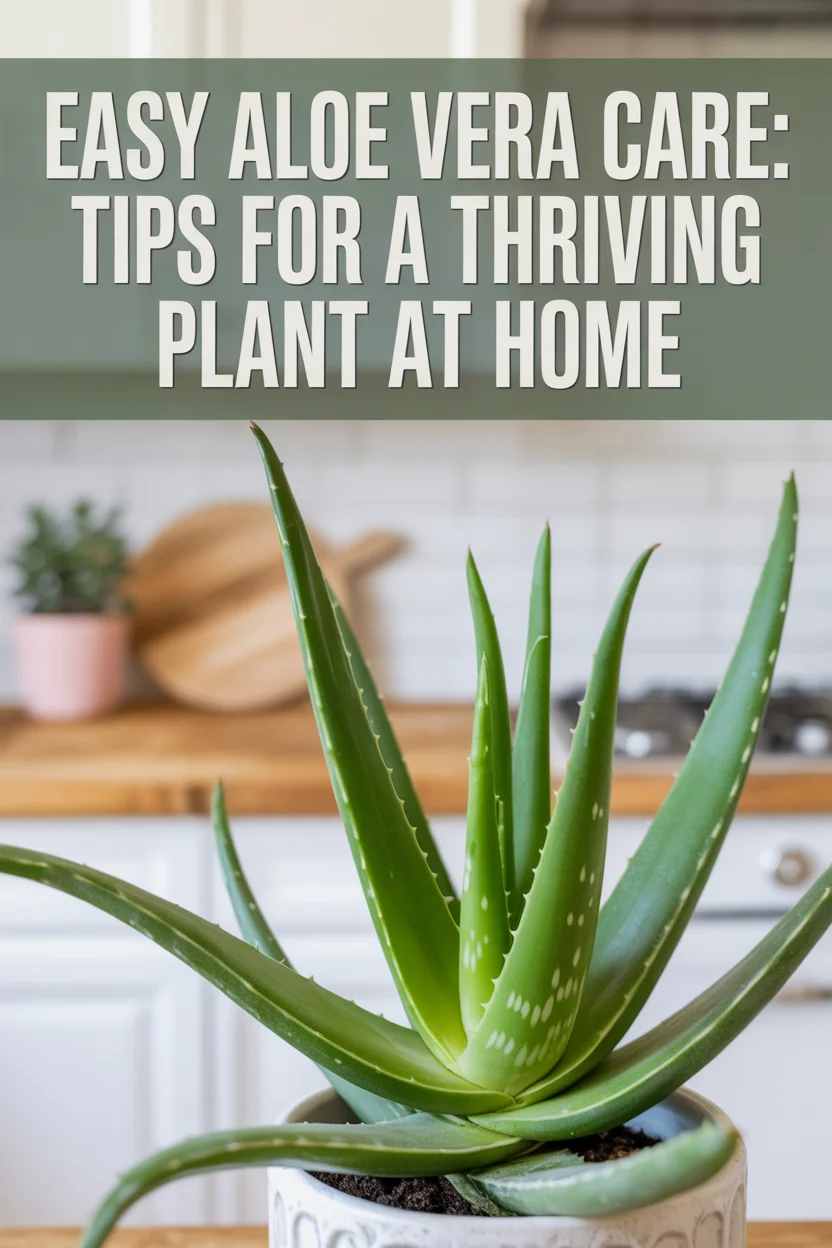Aloe Vera care can get weirdly confusing, right? Like, you’re standing in front of your little spiky green plant thinking… do I water you or will that straight-up murder you? Honestly, I struggled at first. I’m not exactly stealthy with my watering can, but after a few crispy and then soggy plants (learning curve, y’all), now my aloe vera is thriving on my kitchen shelf. If you’re just as puzzled as I was, maybe you’ll find this guide as helpful as I wish I had. Oh, and if you love digging into plant topics, browsing through something like Carmen Jane plant care made easy or checking out indoor beauties with the China Doll plant care guide can be a game-changer. Dive in, let’s get into the dirt!
Table of Contents
About Aloe Vera Plants
No fancy words here. Aloe vera is a hardy succulent, the laid-back cousin of the plant world. It’s got these thick, fleshy leaves, all plump and juicy inside (full of that classic goo we all want). Native to North Africa, but honestly, it adapts pretty nicely wherever you plop it.
Aloe doesn’t need much pampering. That’s its magic trick. I mean, I once left my plant for an entire vacation and it was totally unbothered. The leaves practically store water for rainy days—except, with aloe, rainy days are not really a thing.
You’ll notice the leaves grow in a sort of starburst shape, and (here’s where it gets cool) sometimes they even bloom with tall yellowish spikes, but in homes, flowers are rare. The gel inside? Used for everything from sunburns to terrible hair days. If you love low-maintenance greenery, this plant’s probably your speed.
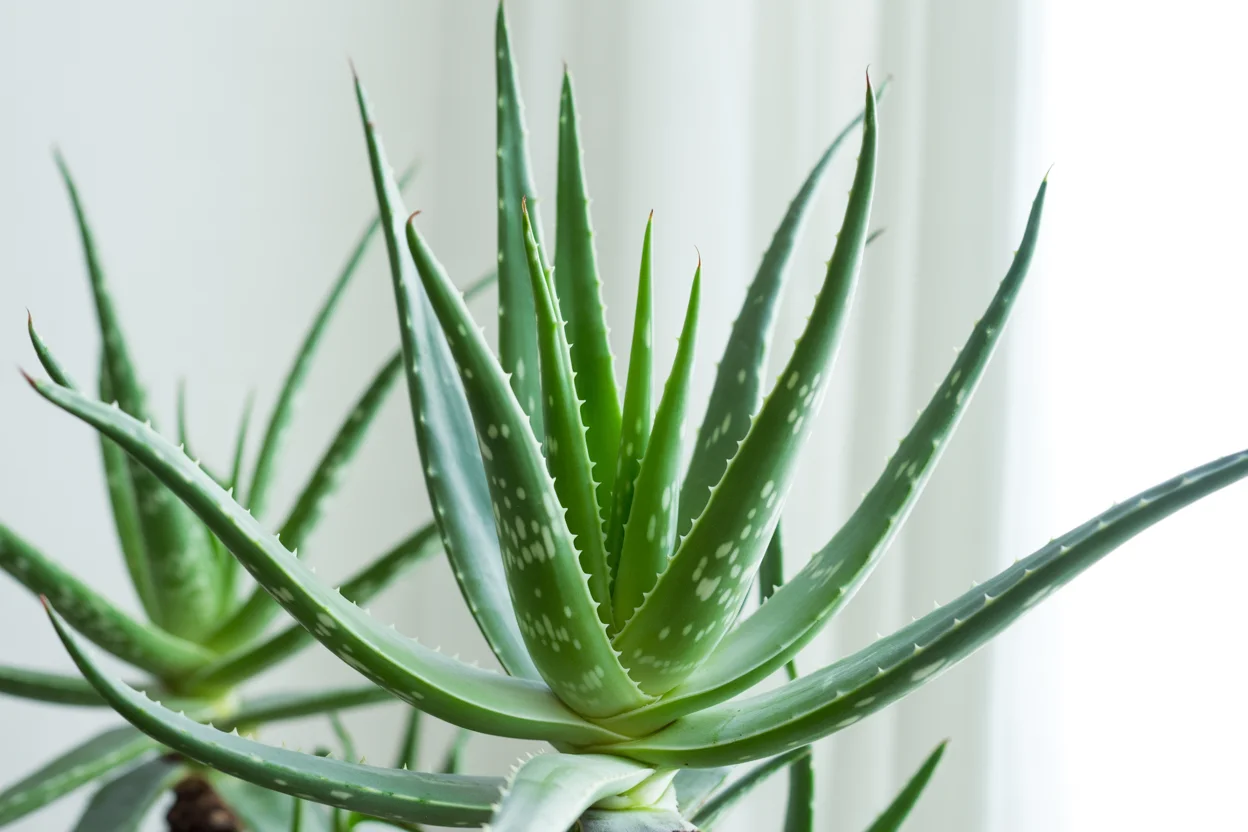
Benefits of Aloe Vera Plant in Home
Okay, here’s where aloe vera gets its five-star review from me. First off, it looks sharp (literally and figuratively), giving your space that “I care about plants” vibe without massive effort.
But the real kicker? It’s useful. You can snap off a leaf, scoop out that fresh gel, and use it for a burn, little kitchen accident, or random dry patch. Plus, aloe’s known for filtering air. I don’t know about you, but I would rather my plants help clean the stuff I’m breathing!
Another point: it barely triggers allergies and keeps to itself. No drama. Some folks think aloe brings positive vibes or luck… I don’t know about that, but my kitchen feels friendlier since mine moved in.
Last thing, just as a fun anecdote? My grandma swears rubbing fresh aloe on mosquito bites stops them itching. I tried it once at a BBQ, and—well, maybe it was the aloe, maybe it was just the chills, but I slept like a baby.
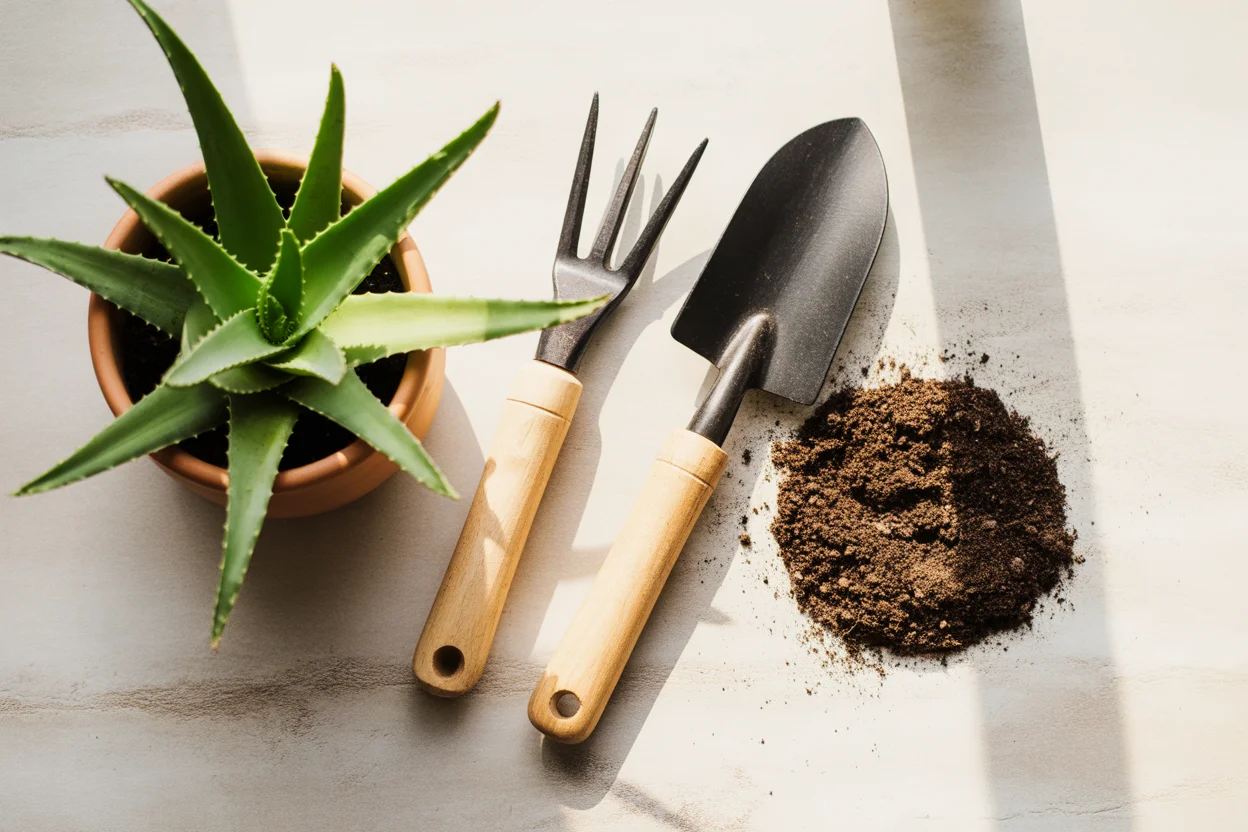
How to Water and Light Your Aloe Vera
Watering aloe vera is weirdly tricky: less really is more. I used to drown my plant—oops. Here’s what actually works, straight and blunt:
- Water when dry: Stick your finger into the soil, like, a knuckle deep. If it’s dry, water. If not, walk away.
- Bright light, not sunburn: Your aloe loves sun but not roasting. Mine does best near a window that gets lots of morning light. Afternoon sun? Too harsh, burns the leaves.
- Let it drain: Never let the pot sit in water. Good drainage is your aloe’s BFF.
- Cool air is fine: They’re not fussy about humidity, just don’t freeze it.
I’ve found my aloe doesn’t need much attention maybe water it every other week in summer, less in winter. Overwatering caused all my problems, every single time.
Here’s a quickie table to help you nail it:
| Factor | Recommendation | Signs of Trouble | Fix |
|---|---|---|---|
| Watering | Every 2-3 weeks (when soil is dry) | Yellow/leaves mushy = too much | Let soil fully dry |
| Lighting | Bright, indirect sunlight | Brown, crispy tips = too strong | Move to softer light |
| Soil | Very well-draining, sandy | Leaves wilting, roots soggy | Repot in better mix |
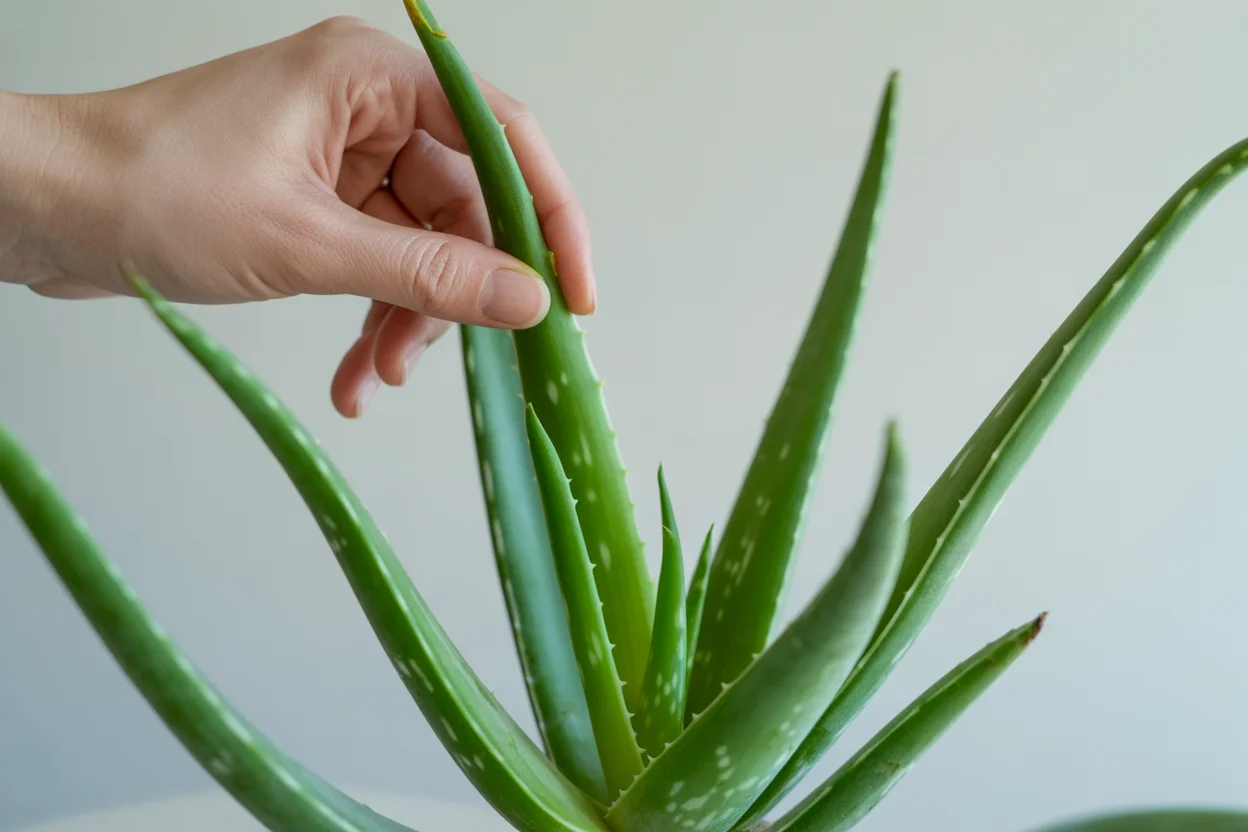
Best Soil and Potting Techniques for Aloe Vera
You want soil that drains like a dream, seriously. Regular garden dirt? Don’t do it. What’s worked for me is cactus or succulent mix from the garden store—lazy-friendly and effective. You can also toss in a handful of perlite or coarse sand for extra drainage. The whole point is, don’t trap water around those roots.
Pot size matters, too. A little snug is fine. Put tiny ones in a four-inch pot, bigger ones in something not too huge. There’s a drainage hole at the bottom, right? Otherwise, you’re setting up for disaster.
When repotting, gently wiggle those roots apart if they’re crowded. Let your plant chill on the counter overnight if you accidentally break a root. Aloe vera will forgive you, promise. But always repot in dry soil, not wet.
If you love plant details, this guide to caring for Elephant Ear plants really explains soil stuff well, and honestly, a lot of it works for aloes, too.
Common Pests and Diseases of Aloe Vera
Good news! Aloe vera doesn’t get sick often, but there are a couple baddies to watch for. Let’s get honest—sometimes, tiny white bugs show up (ugh, mealybugs or aphids). I once found a sticky mess under my plant and panicked, thinking it was dying, but it turned out to be sap left behind by pests. A good rinse (or some neem oil) fixed it.
Root rot is a big problem, usually because of soggy soil. The leaves get soft and flop around. Sometimes, brown spots appear, or the whole plant just turns mushy. If this happens, dump out that wet soil and trim dead roots. Air out the survivor and don’t water for a week.
Honestly, most problems happen from over-helping. Don’t fuss too much and your aloe will probably roll its eyes and thrive anyway.
“I was convinced I’d killed my third aloe vera, but a friend told me to just let it dry out and leave it alone! Now it’s the only plant I haven’t managed to ruin.” — Kira, Texas
Propagation and Harvesting Techniques
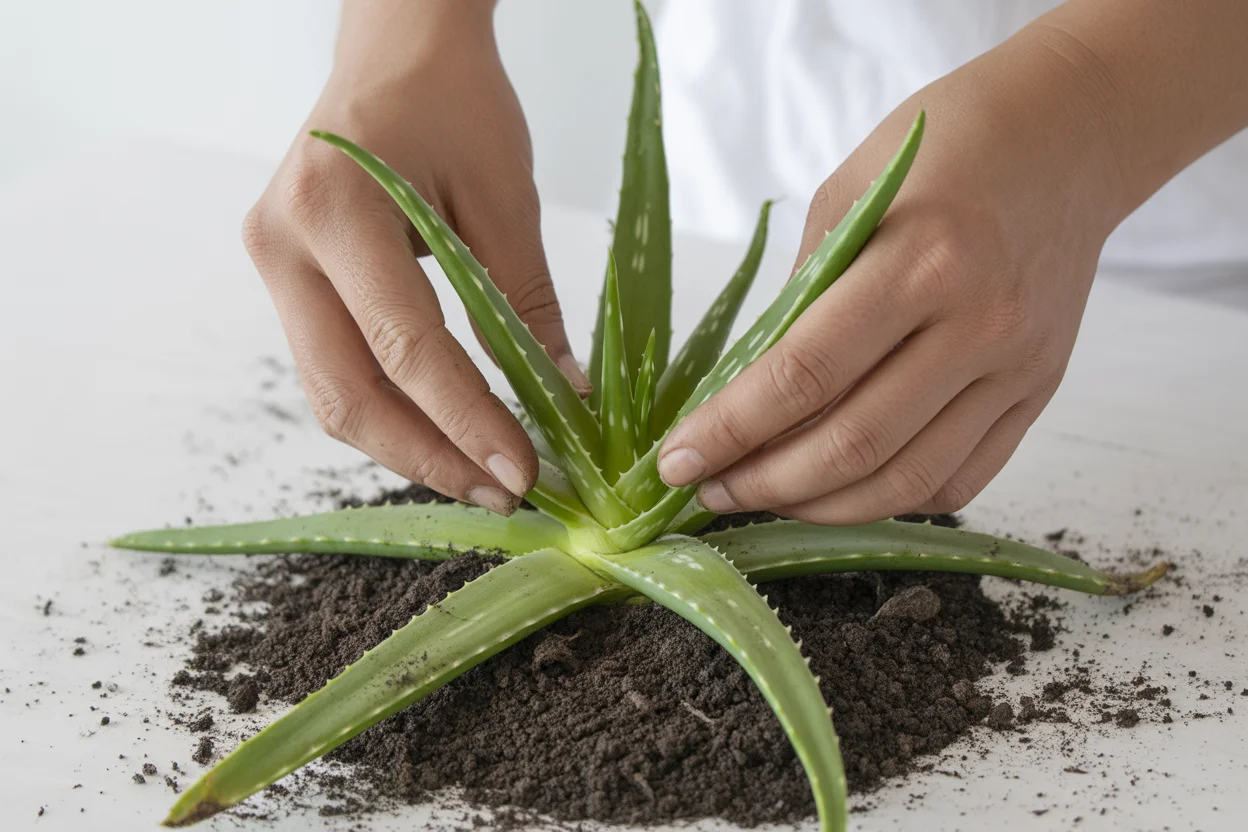
Here’s the fun, slightly messy part. Aloe vera plants love to make babies (called pups or offsets). When you notice smaller clusters growing next to the main plant, that’s your signal. I used to be nervous about separating them, but it’s easier than it looks—just gently wiggle them free with as much root attached as possible.
Plant each pup in its own tiny pot, same well-draining soil. No need to drown them with love during the first week. Always wait until the soil dries out before the next watering.
For harvesting, use a clean knife to slice off an outer leaf. Let the cut end “heal”—that is, dry out and scab—for a day before using the gel. This keeps your mama plant happy and healthy.
If you want more indoor jungle info, take a peek at this ZZ plant care guide.
Do Aloe Plants Need Direct Sunlight?
Short answer: not really! Aloe vera loves bright, but INDIRECT sunlight. If you plop it in a window that roasts all afternoon, the leaves can get gnarly brown scars or, worse, get crispy. I once lost a whole plant in a west-facing window—obliterated in three weeks.
Morning sunshine or filtered window light works awesome. If your windows have screens or sheer curtains, perfect! Strong light, just not scorch-your-eyebrows strong.
Moving it from a dark corner to instant full sun? Not a great move. Transition it slowly, or you’ll see brown, dried-out leaf tips… and sadness.
How Do You Care for a Potted Aloe Vera Plant?
Potted aloe vera care? Simple. I treat mine like a picky friend who likes space. Use a snug but not tight pot, totally must have a drainage hole. The soil’s got to dry out between watering—no sitting in mud.
Water deeply, but let it sit dry for a while before going in again. If leaves bend or flop, your plant’s got too much water. If they shrivel, it’s too dry (though even then, aloes are pretty forgiving if you forget for a week or two).
I turn my pot a little every few weeks, just so all sides get some love from the light. Don’t fuss about feeding; fertilize lightly during the summer at most. Oh, and let the plant enjoy some outdoor shade in summertime, if you can. It’ll love the fresh air.
What Does an Overwatered Aloe Plant Look Like?
Trust me, I’m an expert in this—sadly. If your aloe’s droopy, squishy, or the leaves start falling over, chances are, it’s flooded. The base might go weirdly yellowish or soft. Imagine a water balloon that’s just started leaking. Sometimes, brown or black spots show up—bad news.
And the roots get mushy, even stink. That’s root rot, plain and simple. When you see this, stop watering ASAP, pull off the worst leaves, and repot in fresh, dry soil.
Funny story: my cat managed to dump a glass of water into my aloe’s pot once. I didn’t notice for a week. The plant survived, but looked mad for ages.
Should I Cut the Brown Tips Off My Aloe Plant?
Okay, real talk. If your aloe gets brown tips, it’s not a death sentence. Usually, it means too much sun, not enough water, or sometimes, just age. I snip brown tips off with clean scissors whenever I see them—it tidies up the look and doesn’t seem to hurt the plant.
Don’t yank whole leaves unless they’re mushy or dead. If you see one sad, shriveled leaf, cut it at the base, but avoid hacking at the rest. Aloe heals over quick (like a cool superhero), so trimming really is fine.
Feels a lot neater without those crunchy dry tips sticking out, right?
Bring Home the Aloe Awesomeness
Honestly, caring for aloe vera is less complicated than it looks (coming from someone who managed to kill plastic plants as a kid). Just avoid drowning it, give it some bright but not harsh light, and it’ll basically handle the rest. If you ever get stuck, I still check out tips from places like Aloe Vera Plant Care: How to Take Care of Aloe Vera and—no shame—a few threads from Reddit on aloe vera care for comfort and commiseration. And don’t forget, your plant will forgive your mistakes (they always bounce back), so give aloe vera care a try. You’ll be amazed at how chill this spiky friend really is.
Common Questions
How big does an aloe vera plant get indoors?
Usually not crazy huge—mine’s been about 12 inches tall for literally ages. With time (and if you let pups grow), it’ll fill a good-sized pot.
Can I use tap water for aloe vera?
I do, but if your water’s really hard or salty, use rainwater or filtered water. Some folks say their aloe gets cranky with too many minerals.
How do I fix droopy aloe leaves?
Check for soggy soil first. Usually means overwatering. Dry it out, snip any dead leaves, and let it rest before the next drink.
Is aloe vera toxic to pets?
Yep, to cats and dogs if they eat a lot. Mine has never shown interest, thankfully, but now I keep it on a high shelf.
When should I repot my aloe?
If it’s tipping over or outgrowing the pot, or the pups are crowding, time for a new pot. Spring is best, but honestly, I’ve done it in winter and it’s coped.
